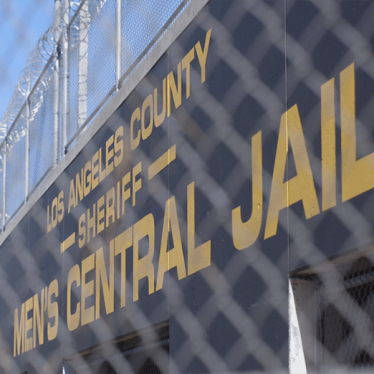California’s new law, Senate Bill 10, signed by Gov. Jerry Brown last week, abolishes money bail but actually undermines genuine criminal justice reform. Because it depends on risk assessment tools that use opaque algorithms, the law may increase pretrial incarceration and even exacerbate racial and class biases in the current system.
The risk assessment tools purport to estimate the likelihood of a person getting re-arrested, or missing a court date. They draw on facts about that person — without considering context — to create a profile. Exactly what facts the tools take into account isn’t defined in the new law, but presumably they will include arrest records. The tools produce a score based on the past behavior of others with matching profiles.
Jailing someone because others with some similar characteristics have failed in the past is wrong, especially because this process will perpetuate discrimination in the criminal justice system. Police bias in stops, searches and arrests is well documented — so tools that use previous arrests to estimate the likelihood of re-arrest will assign higher risk to people of color and poor people.
This inherent bias is reason enough to reject these tools and seek fairer ways to reform the bail system. And there are other reasons to fear them.
Along with other community representatives, we attended a presentation to Los Angeles County policymakers by UC Irvine criminology professor Susan Turner, who designs these types of risk-assessment tools. She acknowledged that bias in policing and society can be embedded in the scoring system. Moreover, she pointed out, policymakers must divide the scores into low-, medium- and high-risk “buckets.” The big question for judges and administrators in every jurisdiction will be how big to make the buckets.
The implications of the adjustability of the scoring are troubling. The tools yield a score, but it doesn’t categorize that score; the size of each bucket is a policy decision. If judges and court administrators want to decrease incarceration, they can shrink the “high-risk” bucket; if they want to jail more people, they can make it bigger. Under the new California legislation, nothing prevents courts from putting 90% of all presumptively innocent people awaiting trial in the high-risk bucket and thus in jail.
This danger is not hypothetical — it is essentially what the federal Immigration and Customs Enforcement agency did under the Trump administration’s “zero tolerance” immigration policy. ICE used risk assessment tools and adjusted them to score all detainees as ineligible for release: It put everyone crossing the border into the high-risk “bucket.”
California’s new law provides no meaningful oversight or checks against manipulation of the scoring. It provides no definition of what factors the tools may consider in estimating risk and no effective way to mitigate their bias. There is no mechanism to even see the risk scores and the data behind them, let alone to challenge the scores.
Politicians say we need to trust the judges, who will control the process. But judges are the ones who have long misused money bail to keep people in custody and pressure them to plead guilty quickly.
Human Rights Watch has documented that between 70% and 90% of people in custody accused of misdemeanors and low-level felonies plead guilty before their first possible trial date. While it is impossible to quantify how many of these people are wrongly convicted, every one of them faced the choice: If you say you are guilty, you can go home, but if you assert your innocence you stay in jail, often for months at a time, losing jobs, leaving children and other responsibilities unattended. These people get criminal records, with lifelong consequences, but not because courts fairly judged them.
SB 10’s use of risk assessment tools gives judges a powerful method to continue the coercion, while pretending their decisions are based on science.
Instead of replacing one unfair system with SB 10, pretrial incarceration must be thoroughly revised. Real reform would uphold the presumption of innocence by reserving pretrial detention only for those accused of serious crimes who are proven to be dangers to the community or flight risks. Proof would come through hearings with defined standards that must be met with evidence, with facts considered in context, and with fair procedures, not through biased statistical estimates.
California can do better than SB 10. Other states considering much-needed bail reform should reject this dangerous example and these biased risk assessment tools.









